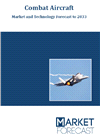The German parliament has authorized the procurement of 90 Litening 5 targeting pods for its Eurofighter Typhoon fleet, enhancing the precision strike and reconnaissance capabilities of the Bundeswehr. The decision reflects Germany’s confidence in Rafael’s systems and continues a decades-long defense partnership. It also aligns with a broader NATO trend emphasizing multi-wavelength sensor integration and stand-off targeting effectiveness in contested airspaces.
Litening 5 is a fifth-generation targeting system already operational with 28 air forces worldwide. With more than 2,000 units delivered and over 2.2 million operational flight hours—primarily during contingency operations—it has become one of the most widely used targeting pods in service today.
Precision Capabilities and Mission Adaptability The pod’s sensor suite includes mid-wave and short-wave infrared, high-resolution color imaging, and dual-wavelength laser designation, with an optional synthetic aperture radar (SAR) for wide-area, all-weather imaging. This enables long-range detection, recognition, and identification of targets under varied atmospheric conditions.
Litening 5 supports both air-to-ground and air-to-air missions, including ground moving target indication, multi-target tracking, and automatic target recognition. For air-to-air operations, it enhances target identification at range, supports detection of low-RCS threats, and provides missile cueing when integrated with the host platform. It also offers capabilities for detecting and engaging unmanned aerial vehicles (UAVs), supporting operational flexibility against diverse threats.

Market forecast by Region, Type, and Fitment. Technologies and Market Overview, Critical Raw Materials, Country Analysis, Opportunity Analysis, and Leading Companies
Download free sample pages More informationMulti-Platform Integration and Operational Footprint Platform-agnostic in design, Litening 5 has been integrated on over 26 aircraft types, including F-15, F-16, Gripen, A-10, Mirage 2000, Embraer, and Eurofighter. It is compatible with laser-, GPS-, and image-guided munitions and includes real-time datalink capability across Ku, C, and L bands.
Germany’s move from Litening 3 to Litening 5 reflects both satisfaction with system performance and the Bundeswehr’s emphasis on improved precision, survivability, and future growth potential. This mirrors a wider European trend of upgrading existing fleets through advanced sensors rather than relying solely on new platforms.
Expanded Options and Future Configurations An extended configuration, Litening+SAR, adds synthetic aperture radar to the EO/IR pod architecture for all-weather, wide-area imaging—addressing operational needs in low-visibility or maritime environments. Additional modular upgrades will be available to expand capabilities further.
Global Adoption and Strategic Implications Litening pods are in service with a broad range of air forces worldwide. Their operational record and modular design make them a reliable solution for militaries seeking interoperability and mission adaptability without major platform changes.
Germany’s order adds to the global demand for advanced targeting systems as armed forces adapt to evolving threats and operational requirements.